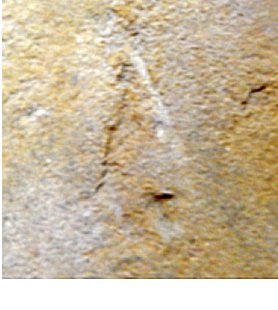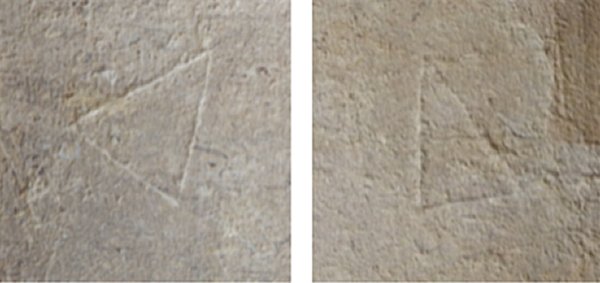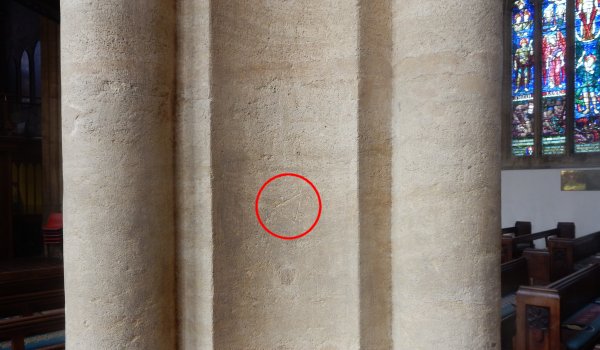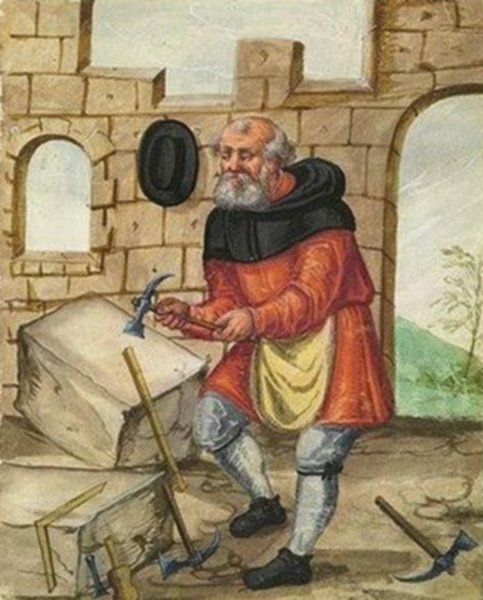the church of st john baptist
Banker Marks (Mason's Marks)
in St John's church
Banker marks, or masons' marks provided evidence for the work produced by the highly-skilled craftsmen who constructed the magnificent stone churches of the past and who cut the stone into the regularly squared blocks or carved more complex sections of mouldings, capitals, bases and such like.
These craftsmen were invariably paid more than the masons who built with the stone. They underwent lengthy training before they were able to achieve the accuracy required. Today, a mason would need to train full-time for two to three years to be proficient, and for about six years to be able to do more intricate work. The medieval mason would have been familiar with templates for cutting complex shapes and with using books of drawings in order to carve animals, plants and birds, whether real or imaginary.
There were two ways by which medieval masons were paid; firstly, the plain work, such as the walling stone, may have been costed by measure and the masons simply received regular wages. Secondly, as here at Yeovil, the stone masons were paid by the piece – the more they carved, the more they got paid. So, in order to make sure they they got paid for the correct number of stones worked on, each mason signed their piece with their individual mark.
Banker marks were usually drawn free-hand, and the marks were made with a chisel or a punch and a point is sometimes used to drill the ends of the lines. Although it was important that marks of one mason were not confused with the marks of others, it is clear that they did not spend a long time cutting elaborate or intricate marks.
A 2010 survey of
St John's
church,
discovered a
total of 466
banker marks
with seventeen
individual
designs. Analysis
of the banker
marks has
shown that at
least two teams
of masons worked
on the church
fabric, one team
worked on the
north side of
the building
while the other
team operated on
the south side.
gallery
 The
faint mark shown
at left, an
inverted “V”, is
a banker mark
located in the
stairwell of St
John’s crypt.
The
faint mark shown
at left, an
inverted “V”, is
a banker mark
located in the
stairwell of St
John’s crypt.
Below, are two banker marks or mason’s marks from the south arcade and both facing the south aisle.
The mark to the left is on the third pier from the west and that to the right is on the fourth pier from the west, indicating that the same mason was responsible for both piers.

These photographs
feature in my
book 'The Church of St John the Baptist, Yeovil - a History and Guide'.

The banker mark (circled red) on the third pier from the west of the south arcade (the left photograph above) and facing the south aisle.

An illustration of a medieval stonemason at work.